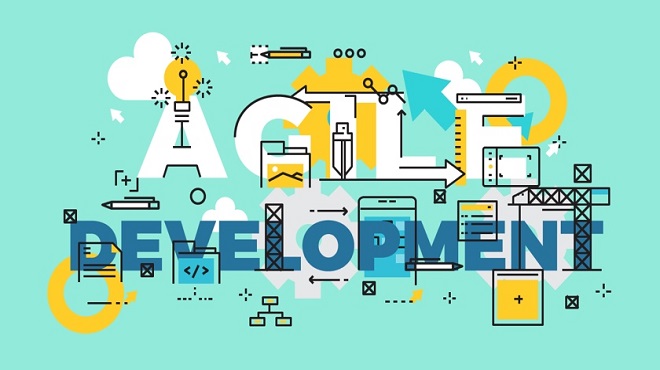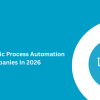

The Agile methodology is basically an iterative approach to software product development that is carried out in a collaborative environment through the help of self-organizing teams. It is the methodology that efficiently produces high-quality software in a timely and cost-effective manner to satisfy the varying needs of stakeholders. It is known that majority of software development can be categorized as either Agile or Waterfall kinds of methodologies. Waterfall methodology focuses on the approach in which development of software flows serially from beginning to end. In Agile methodology, customers avail lots of prospects to look at the software product and create decisions and modifications to the project. Hence, it is widely prevailed and adopted methodology for software product development.
Why Agile is required?
Agile development enables to avoid wasted man hours and ineffective designs. Its iterative approach makes an environment for continuous progress towards innovation. There are key aspects to why using Agile to product development is a valuable undertaking, let’s have a look at them:
It pushes engineering teams by the help of DMU cycle at a quick pace for small section of the design-
By the help of the f cross-functional teams, it is found that workloads can be managed completely autonomously within every minute task. The software product development work can continually be carried out without bigger picture meetings concerning the entire engineering team. Agile development facilitates meetings to be kept brief, tasks to be done rapidly, and it facilitates continuous workflow. These aspects benefits engineers along with overall management in the process of software product design.
It establishes an environment for innovation–
The aim of every software engineer or the team of software engineers is to develop a project through continuous innovation, ultimately attaining the finest possible outcomes for the client. It is known that static waterfall processes just enable the finest possible solution conceivable when the preliminary specifications and the workflow blueprint were considered. Whereas, Agile works to bring constant change during the whole design workflow and prepares a setting that is ideal for innovation.
It provokes active thinking and preventative action–
In a typical software design process, blueprint of tasks is to get done and adhere to it as finest as possible. The corresponding “instruction-based” work process can function well; however, it motivates development over a straight and thin bath. Through the use of iterative Agile techniques, developers can be more intensely concerned with problem solving during the course of creation, perhaps even predicting possible concerns. It is found that this kind of active thinking occurs to some extent in waterfall processes; however, Agile enlarges its potential.
All such overarching advantages of Agile when merged with more explicit outcomes of its application in every design flow cover what makes it such a valuable philosophy for the process of hardware development.
Features of Agile Methodology
Agile is designed to decrease costs of software development and the time to market-
There are many software companies who wish to develop software products in a short time and for them Agile is just perfect. The reason behind this is it enables development of the software product at the same time that they are collecting the information and requirements. Moreover, the reduced development time also enables the software product to be more accustomed to the present time and state of the market, hence making sure that the product is pertinent and will be released.
Agile is capable to provide great responsiveness with product development teams’ –
Most of the times, software product development teams are facing issues with unpredictable situations, and it does not promise well if one or two of such scenarios hit them while they are already halfway into an ongoing product development process. This implies one of the two things: either they scatter all the previous work involved into the previous phases of the cycle and begin fresh again, or they overlook the proposition of such scenarios and proceed with the product development, with the hope that the product will still sell after it is launched into the market. In Agile methodology, it is known that, the teams can respond instantly whenever such unexpected scenarios come up, and also they can adjust accordingly.
Agile is “incremental” in nature –
At the completion of all the iteration, the groups and teams involved into software product development team are mandatory to depict a product increment. It can serve as a prospective feature that they believe would increase the value to the product they are developing. Alternatively, it can be a nominal change that they consider will enhance the final product.
The backlog: A list of prioritized requirements –
Every software product release initiates with a list known as a “backlog,” which comprises of a detailed list of prioritized requirements. Actually, this is not a surfeit in the negative sense but it suggests a list of work to be accomplished. While deciding the product release, you should choose between scope, schedule and cost.
Through the use of Agile methodology, the software product development team will always regulate the scope of work in order to make sure that the most significant items are accomplished first. This list serves as order of importance and based on that software developers work. The backlog is essentially a collection of requirements that can modify weekly based on the extent of your iterations. When you decide to launch a product on a specific date with your present team, the scope of what requirements that would be completed will constantly adjust. If the target is to fulfil all the requirements, then your process would need additional iterations.
Iterations in Software Development –
As an alternative of delivering the complete backlog at the completion of a release, one can separate the work into “iterations.” Basically, iterations are tiny quantities of delivered requirements, taken from the backlog in their specific order of significance. Generally, iterations have tiny timeframes that continue from one to four weeks, based on the experience of team. In case you are functioning with a team that has not functioned in an Agile setup, it is recommended to use one to two weeks iterations, because they allow you to swiftly alter priorities at the completion of the iteration.
The chief component of iteration is that the priorities in respect to which particular requirements must be built do not essentially alter inside the iteration; however, this list must only alter from previous iteration to the next. It is important to note that single iteration may not yield a marketable release; multiple iterations may be essential for a release and to accomplish all backlog items. Though, the team must be capable to exhibit all agreed-upon functions at the completion of the iteration.
Cross-functional Teams –
An Agile team which comprises of five to nine people cover the functions of a bigger development organization, like testers, developers, documenters as well as product managers. The software development team members are self-organizing and they determine who and how to deliver the requirements inside the iteration. In Agile methodology, whenever there are issues throughout the process, gaining access to a product manager enables fast resolution to the issues.
Risk Management –
The Agile methodology accepts that project change is inevitable. The use of small iterations allows changes to be absorbed quickly without inflicting significant project risk. The backlog order can adjust as business priorities evolve; with the next iteration, the team can adapt to those priorities.
Product Manager’s Role –
The function of the product manager is incorporated into the Agile methodology. The product manager prepares and upkeeps the backlog and offers the requirements for the launch. He/she involves in the process by replying to questions when they arise. It is known that the Agile methodology concentrates on face-to-face conversations as well as test cases to facilitate collaboration and to maintain teams aligned into their focus. Moreover, this method too focuses on demonstrable features in form of the key measure of tracking progress. Based on such factors, the Agile methodology yields less written documentation as compared to several other product development methodologies.
Customer Input-
As the software product team provides demonstrable functions at the completion of all the iteration, the procedure of protecting customer feedback is greatly simplified because features can be depicted to customers then, in its place of having to wait till the last released product.
Daily Stand-ups –
Each day during the process of iteration, the software product development team will manage a stand-up meeting (alternatively recognized as scrum). Throughout this meeting, every software developer will summarize their progress from the previous day, along with any obstacles met. The ultimate goal is to solve problems and enhance developers’ productivity. The scrum master (known to be a head of the process) eliminates obstacles and they will make sure that the right persons are brought together to converse a business issue.
Concluding Note:
Business today needs cost-effective and fast methodology for implementation of software projects and for them Agile methodology is the best. The method is rapid, iterative, and safe.

Dec 29, 2025

Dec 27, 2025

Dec 26, 2025

© 2017 All rights reserved.